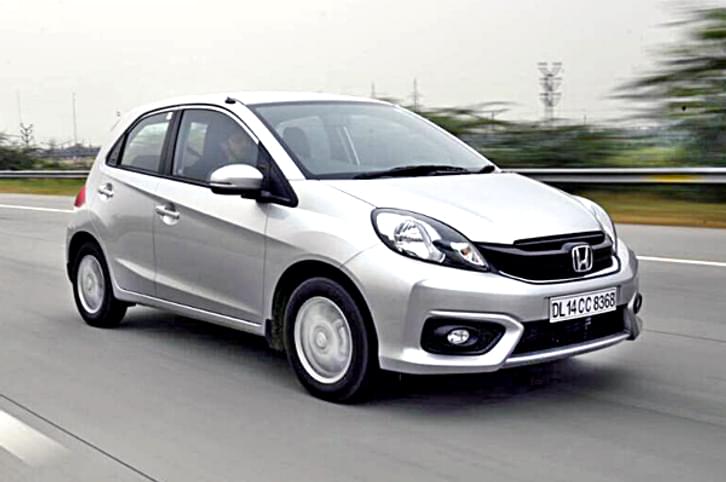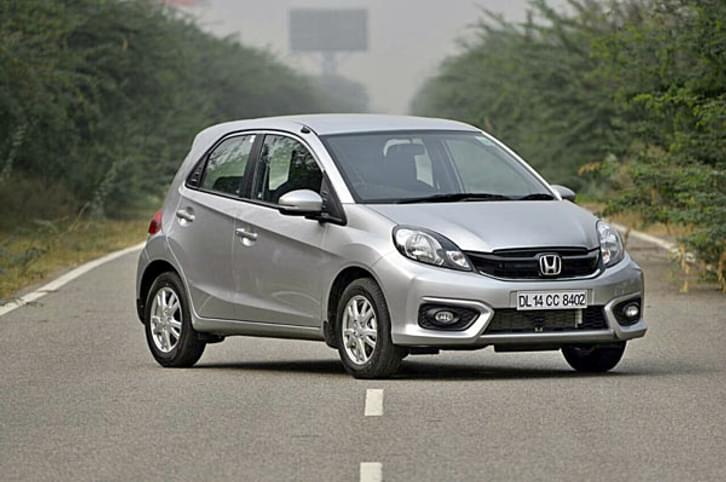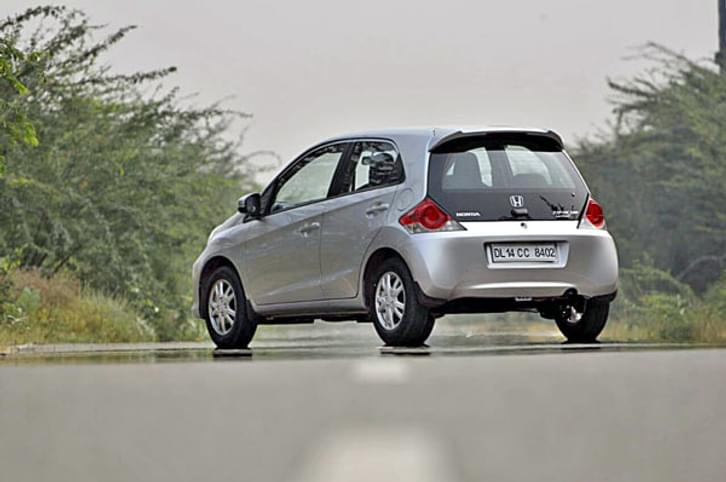2016 Honda Brio facelift review, test drive
The Brio finally gets an update. We tell you what’s new and how it’s to drive.
Updated on Oct 18, 2016 03:13:33 PM
19,892 Views
Follow us on



What is it?
In times when cars receive updates and facelifts as frequently as biennially, the Honda Brio was a bit of an outlier. Save for the introduction of an automatic option in 2012, Honda’s cute and cheerful hatchback hadn’t seen much change in the five years since its launch. At long last, though, here is the facelifted Brio. And it is a facelift in the truest sense of the word. The exteriors have been freshened up and the cabin has been given a makeover too, but the mechanicals have been left unaltered.
As is very evident, the Brio’s basic shape remains the same but plenty has been done to enhance the design. Like its recently updated compact sedan sibling, the Amaze, the Brio too gets a new nose; one that lends the hatchback a more grown-up look. Chief among the changes is a new grille that has a glossy black band that runs across its width. Lower down the restyled front bumper is a lot more defined and features faux air intakes that house the fog lamps.
| Honda Brio Price, Mileage, Specifications, Features and Variants | |
|---|---|
| Brand | Honda |
| Model Name | Brio |
| Honda Brio Price | NA |
| Honda Brio Range/Mileage | Petrol : 16.5 - 18.5kpl |
| Honda Brio Specifications | Hatchback | 5 doors | 5 seats View All Specs |
| Honda Brio Features | Halogen headlight | 2 DIN display | 2 airbags View All Features |
| Honda Brio Variants | 1.2 i-VTEC E | 1.2 i-VTEC S | 1.2 i-VTEC VX View All Variants |
What might continue to divide opinion is the styling at the rear. Honda has retained the all-glass tail-gate for India, even though the updated Brio for Thailand gets a revised unit. What the Indian Brio does get is reprofiled tail-lights and a new roof-mounted rear spoiler and they do help the look to some extent.
What is it like on the inside?
If there was one area where the Brio needed the most attention, it had to be the cabin and particularly so, the dashboard. The original Brio’s plain dash was unappealing and took much away from the surprisingly roomy space. So, we are happy to report Honda has drafted in the dashboard from the Amaze and the BR-V. The design of the dash is more coherent and contemporary while the silver highlights and faux carbonfibre garnishes add a bit of sportiness too. Optional all-black seats and the redesigned instrument cluster further do their bit to uplift the cabin ambience.
The facelift also brings with it a longer equipment list. New to the Brio are electric controls for the air-con system and also a new 2-DIN audio system with Bluetooth connectivity.
Elsewhere, the Brio remains unchanged. The front seats, while skinny, are quite comfortable, with the driver seat being height-adjustable. The rear seat affords passengers decent legroom, but is let down by a short seat cushion and consequent lack of under-thigh support. Still, the rear seat is better and far more usable than what you get in most cars of this size. Unfortunately, a smallish boot limits the Brio’s practicality.
What is it like to drive?
As mentioned, Honda hasn’t revised the Brio’s mechanicals. It continues to be powered by the same 1.2-litre i-VTEC petrol engine that produces 88hp at 6,000rpm and 109Nm at 4,500rpm. As before, gearbox options include a five-speed manual and a five-speed torque converter automatic. The latter gearbox is an interesting choice given the Amaze that runs the same engine got a new CVT gearbox with its update a few months ago.
As always, the 1.2 engine feels peppy at low revs and is a good partner in town, flat mid-range notwithstanding. Where you can feel some of Honda’s engine prowess is when you push on with a generous dose of power just before the redline. The five-speed manual box offers fairly crisp shifts and sporty short throws and comes allied to a light and easy to modulate clutch. Likewise, the five-speed automatic continues to impress for its smoothness and responsiveness.
You’ll also like how the Brio goes about corners. The small hatch handles well, feels composed around corners and comes with a steering that is fairly direct too. Where the Brio could be better is in ride comfort. The suspension crashes and thuds fairly often and allows road imperfections to filter through in sharp jars. It’s not all that absorbent at high speeds either.
Should I buy one?
Small on the outside, big on the inside and powered by an efficient and peppy engine, the Honda Brio always made for a great city runabout. Thankfully, the revised dashboard has added a good cabin ambience to the Brio’s list of positives and we quite like the way the facelift has turned out too. In many ways, then, the Brio does offer all that you’d need from a city car.
The Brio range starts at Rs 4.69 lakh (ex-showroom Delhi) and extends up all the way to Rs 5.95 lakh while the sole automatic version costs a steep Rs 6.81 lakh. The thing is, when you see the Brio in light of similar priced competition from the likes of the Maruti Ritz, the Swift, Ford Figo, Hyundai Grand i10 and even the Mahindra KUV100, the case for the little Honda doesn’t seem quite as compelling. Yes, it is better than before and improves on an already good package. But is it enough to bring the attention back to the Honda? Perhaps not. We fear it’s not a case of too little, but more a case of too late.
Copyright (c) Autocar India. All rights reserved.





Comments
Member Login
Personal Details
No comments yet. Be the first to comment.